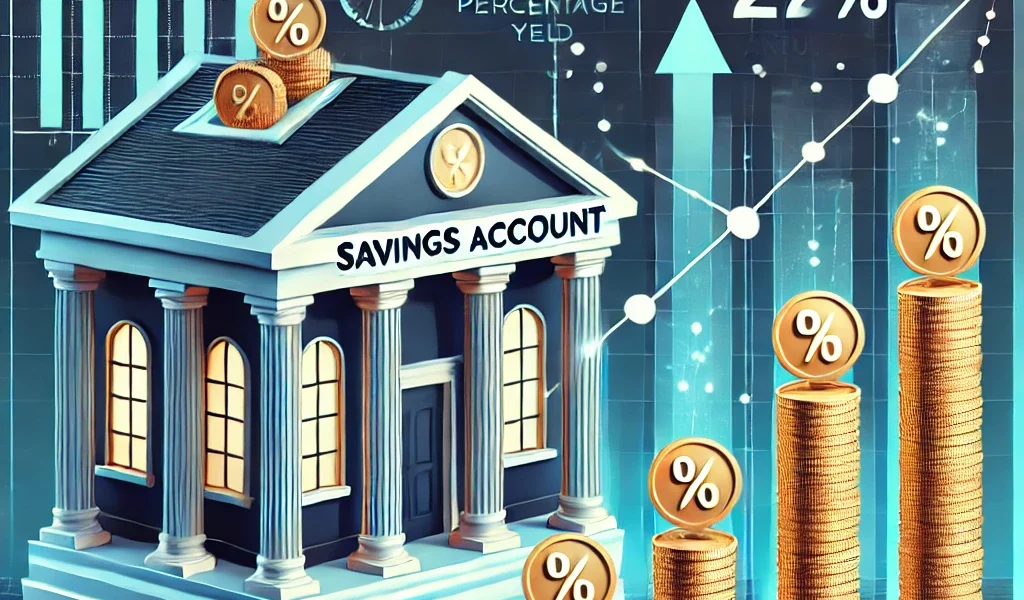Introduction
A high-yield savings account is one of the best ways to grow your money safely while maintaining liquidity. With interest rates fluctuating based on economic conditions, it’s important to stay updated on the best options available. In 2025, many banks and financial institutions are offering competitive interest rates, but choosing the right savings account requires more than just looking at the highest rate.
In this guide, we’ll explore the top savings accounts with the highest interest rates in 2025, along with their features, benefits, and factors to consider before opening an account.
1. Why Choose a High-Yield Savings Account?
a) Safety and Security
- Most savings accounts are insured by government agencies (FDIC in the U.S., DICGC in India, etc.), protecting your money up to a certain limit.
- Low-risk investment compared to stocks or mutual funds.
b) Competitive Interest Rates
- Unlike traditional savings accounts, high-yield accounts offer significantly better returns on deposits.
c) Liquidity and Flexibility
- Unlike fixed deposits or other long-term investment options, savings accounts allow easy withdrawals and fund access.
d) Additional Benefits
- Many banks offer bonus interest rates, automated savings plans, and integration with budgeting tools.
2. Factors to Consider Before Choosing a Savings Account
a) Interest Rate
- Look for banks offering the highest annual percentage yield (APY).
- Ensure the interest rate is stable and not just a promotional offer.
b) Fees and Minimum Balance Requirements
- Some banks charge maintenance fees or require a minimum balance to earn the highest interest.
c) Accessibility and Convenience
- Check if the bank offers mobile banking, online fund transfers, and ATM access.
d) Customer Support and Reputation
- Research the bank’s customer service, reviews, and reputation for reliability.
e) Additional Features
- Some banks provide tools like automatic transfers, financial goal tracking, and rewards on deposits.
3. Best High-Interest Savings Accounts in 2025
a) Bank A – SmartSaver Account
- Interest Rate: 5.25% APY
- Minimum Balance: $500
- Pros: No monthly maintenance fees, mobile banking features, easy fund transfers.
- Cons: Interest rates drop if balance falls below the threshold.
b) Bank B – FlexiSave Plus
- Interest Rate: 5.10% APY
- Minimum Balance: $1,000
- Pros: High APY for new customers, easy online account opening.
- Cons: Limited free ATM withdrawals per month.
c) Digital Bank C – HighYield Online Savings
- Interest Rate: 5.40% APY
- Minimum Balance: None
- Pros: No fees, 24/7 access, highest interest rate.
- Cons: No physical branches, online-only customer service.
d) Bank D – Premier Savings Plan
- Interest Rate: 5.00% APY
- Minimum Balance: $2,500
- Pros: Premium customer support, integration with investment accounts.
- Cons: Higher minimum balance requirement.
e) Bank E – Everyday Saver
- Interest Rate: 4.85% APY
- Minimum Balance: $100
- Pros: Beginner-friendly, good for emergency savings.
- Cons: Interest rate is slightly lower than competitors.
4. How to Maximize Returns on Your Savings Account
a) Maintain the Required Minimum Balance
- Ensure your balance meets the required threshold to earn the highest APY.
b) Automate Deposits
- Set up automatic transfers to consistently grow your savings.
c) Avoid Unnecessary Withdrawals
- Frequent withdrawals can lead to penalties or a drop in interest earnings.
d) Look for Bonus Interest Offers
- Some banks provide higher rates for new customers or for maintaining a consistent deposit pattern.
e) Compare Periodically
- Interest rates change frequently, so keep an eye on new offers from different banks.
5. Conclusion
A high-yield savings account is a smart financial move for anyone looking to grow their money safely while maintaining easy access. The best savings account for you depends on your financial goals, balance capability, and banking preferences. In 2025, banks are offering attractive interest rates, but it’s essential to consider additional features, fees, and convenience before making a decision.
By choosing wisely and following best practices, you can maximize your savings and earn significant returns over time.
Disclaimer:
This article is for informational purposes only and does not constitute financial advice. Interest rates and terms may vary based on location and financial institutions. Always check with the respective bank for the most accurate and updated information before opening an account.




